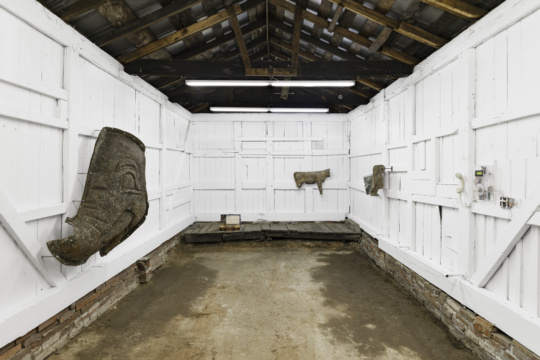
BURNING QUESTIONS is our new weekly advice and etiquette column, appearing every Monday. Nashville writer, curator, and gallerist Sara Estes is on duty. What would you like to know? Submit your questions to [email protected].
Dear BURNAWAY,
I found a gallery that I think might be a good fit for me and my work, but I’m torn. Should I just email them? Will I come off like a weirdo if go in the gallery and introduce myself first? Should I leave them with a disc of images or my card or something? HALP.
Leo in Chattanooga
Dear Leo,
Your intuition may tell you to charge in all “I am artist; hear me roar,” but shush that voice. It can seem gauche and aggressive when an artist shows up unannounced in a gallery looking for a show or representation or asking “do you think my work is good?” You’ll likely be turned away, or worse.
Think of gallery-shopping a little bit like dating. Be cool, be casual at first. Go to a few openings and events, don’t pitch yourself or your work, just be there. Maybe offer a quick congratulations or compliment on the exhibition to the owner/director/curator. Skip the fawning. Subtle, well-placed flattery is a powerful thing, sunshine. Many galleries will notice you and remember you were there.
Next, send a brief email (by brief I mean a few sentences) asking if they are accepting submissions. If their site doesn’t include submission guidelines (always check before you ask!), you may want to inquire about the submission process, too. This email is an initial, unpressured first contact; also, it shows you as the smart and considerate person you are.
The truth is, Leo, in the end it’s only your work that will speak for you. If the submission process requires a link and a short bio, do that; maybe add a doting comment about the gallery, a few lines about who you are, and the link. Do not send a prolix bio or conceptual breakdown of your work: initially, all things should be brief. Allow the work to speak for you. If the gallery is curious and likes your images, they’ll ask you more. Remember: there’s nothing you can say that will make them like your work more, but there might be plenty of things you could say to make them not like it.
Your website will leave an indelible impression, double-check that it’s up-to-date and functioning properly. Have excellent photographs of your work; I’m talking razor-sharp, hi-res images. If you’re not a photographer, pay someone to do it for you. I can’t stress this enough. Local photo students are usually poor and looking to build their portfolio—hire them if you can’t afford a professional. This may sound like a no-brainer, but you’d be surprised how low-res, off-color images get passed around. Your website needn’t be fancy or even paid-for, but let it be simple. Think of your site as a gallery: white walls work best, they let the art shine. I could name several artists with great sites for you to look at, but the one I looked at most recently and was impressed by was Nashville-based photographer Tamara Reynolds’s site. Simple layout, just enough information, gorgeous cinematic images.
Finally, in the submission, extend an invitation to visit your studio. It’s not pushy, and it leaves a door open if they decide to walk through it.
Something to keep in mind: galleries are often looking to fill holes in their stable of artists. If you are making work relatively similar to another artist showing there, that might be enough reason to pass on you. If it’s a no, screw taking it personally, Leo. Maybe when a spot does open up in the future, you’ll be first on their minds. Just move on, and don’t slack off. Keep blogging; keep submitting to things; keep being involved in the art world. Persistence is everything. If you keep doing your absolute best work, the right gallery will find you. Trust in that.
Got a burning question for Sara? Send it to [email protected].
Sara Estes is a writer and curator based in Nashville, Tennessee. She currently works at David Lusk Gallery and is the former gallery coordinator for the Carl Van Vechten and Aaron Douglas Galleries at Fisk University. She is also the apprentice to renowned paintings conservator Cynthia Stow of Cumberland Art Conservation. Estes is the cofounder and curator of the Nashville-based contemporary exhibition space, Threesquared. Her writing and art criticism has been featured in numerous publications, including BURNAWAY, Number, Nashville Scene, Nashville Arts Magazine, ArtsNash, and ArtNow.
Submitting To A Gallery
Related Stories
Reviews
Reviews
Reviews
As for me, I’m just passing through this planet at Bad Water, Knoxville
Harrison Wayne reviews the entangled sculptures and taxidermic specimens found in As for me, I’m just passing through this planet at Bad Water, Knoxville.
Mapping the Body at FotoFest’s 2024 Biennial, Houston
Rosa Boshier González explores how three artists on view during FotoFest's 2024 Biennial in Houston have mapped histories of movement onto the body.
Orchid Daze by Lillian Blades at the Atlanta Botanical Gardens
Blake Belcher reviews Atlanta-based Bahamian artist Lillian Blades' new work engaging orchids, transplantation, and diaspora at the Atlanta Botanical Garden.




